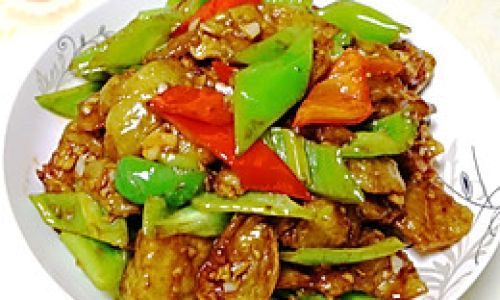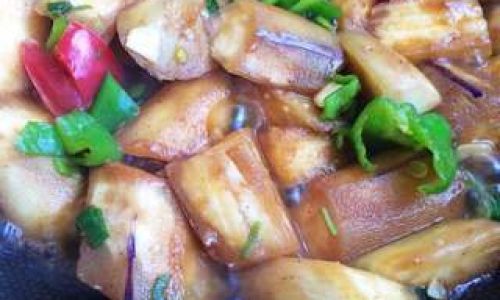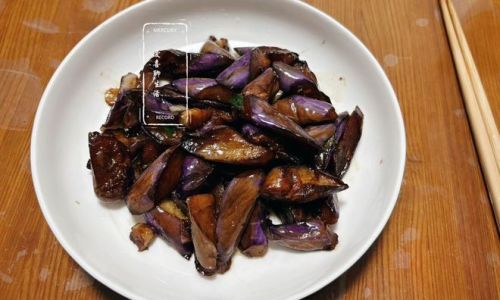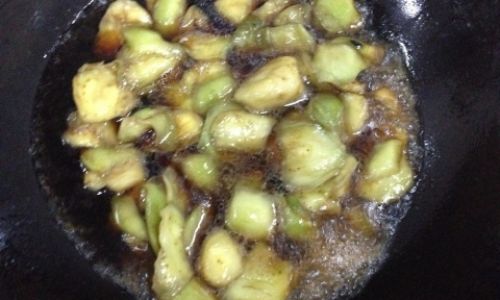Introduction
In the vast culinary landscape, where dishes from every corner of the world intertwine to create a symphony of flavors, one humble vegetable often stands out due to its versatility and ability to transform into a myriad of delightful creations: the eggplant. Known for its soft, sponge-like flesh that readily absorbs seasonings and cooking techniques, eggplant is a staple in many cuisines, from the rich babaganoush of the Middle East to the hearty ratatouille of France. Among these myriad preparations, one stands out for its unique texture and flavor profile – the crispy roasted eggplant, or “hard-roasted eggplant” as it is sometimes called. This dish combines the smoky, caramelized exterior of roasted vegetables with the tender, almost creamy interior that only a perfectly cooked eggplant can offer. In this article, we will delve into the art of making crispy roasted eggplant, exploring the techniques, ingredients, and tips necessary to achieve this culinary masterpiece.
Understanding the Ingredients
Before diving into the cooking process, it’s crucial to understand the star of our dish: the eggplant. There are several varieties of eggplants, ranging from the small, round Indian variety to the long, slender Italian ones. For crispy roasted eggplant, the best choice is usually a medium-sized, firm eggplant with a glossy skin. Avoid those that are overly soft or have bruises, as they may not hold up well to the roasting process.
In addition to the eggplant, you’ll need a few essential ingredients to enhance its natural flavors:

- Olive oil: This is not just for lubrication; it adds a rich, fruity flavor that complements the earthiness of the eggplant.
- Salt and pepper: Basic seasoning, but crucial for enhancing the natural taste of the vegetable.
- Herbs and spices: Depending on your preference, you can use rosemary, thyme, garlic powder, or even a sprinkle of paprika for a hint of smokiness.
- Lemon juice and zest: For a refreshing tang that cuts through the richness of the roasted eggplant.
- Optional extras: Parmesan cheese, breadcrumbs, or even a drizzle of balsamic glaze can elevate this dish to new heights.
Preparing the Eggplant
-
Washing and Drying: Begin by washing the eggplant thoroughly under running water. Pat it dry using a clean kitchen towel or paper towels. Moisture can prevent the skin from crisping up properly, so ensure it’s completely dry before proceeding.
-
Slicing: Cut the eggplant into rounds or long strips, depending on your preference. Aim for uniform thickness to ensure even cooking. If you prefer, you can also peel the eggplant, but leaving the skin on adds both texture and nutrients.
-
Salting: Some recipes recommend salting the eggplant slices and letting them sit for 30 minutes to draw out excess moisture. While this can help with reducing oil absorption, it also alters the texture slightly. Experiment to see what you prefer.

-
Patting Dry Again: If you’ve salted the eggplant, rinse it off lightly, then pat it dry once more with paper towels.
The Roasting Process
-
Preheating the Oven: Preheat your oven to 400°F (200°C). This high temperature is essential for achieving that crispy exterior.
-
Oiling the Pan and Eggplant: Line a baking sheet with parchment paper for easy cleanup. Drizzle a small amount of olive oil onto the parchment and spread it around using a pastry brush or your fingers. Arrange the eggplant slices in a single layer on the sheet, then brush or drizzle each slice with more olive oil. Make sure they’re not overcrowded; this allows for even roasting and better caramelization.

-
Seasoning: Sprinkle the eggplant slices with salt, pepper, and your chosen herbs and spices. For an extra layer of flavor, you can also mince some fresh garlic and scatter it over the slices.
-
Roasting: Place the baking sheet in the preheated oven and roast for about 25-35 minutes, depending on the thickness of the slices. Halfway through, flip the slices to ensure even cooking. They should be golden brown and slightly charred in spots, indicating that the sugars have caramelized.
-
Checking for Doneness: Use a fork to gently pierce the thickest part of a slice. It should give easily but still hold its shape. Overcooking can lead to a mushy texture, so be vigilant.
Finishing Touches

Once the eggplant is perfectly roasted, remove it from the oven and let it cool slightly on the baking sheet. This helps the flavors meld and the crispiness to set.
-
Lemon Zest and Juice: While the eggplant is still warm, sprinkle it with freshly grated lemon zest and a squeeze of lemon juice. This adds a bright, refreshing note that balances the richness of the roasted vegetable.
-
Serving Suggestions: Crispy roasted eggplant can be served as a side dish, a topping for salads, or even incorporated into pasta dishes. For a gourmet touch, sprinkle with grated Parmesan cheese or drizzle with a balsamic glaze.
Storage and Reheating

Leftovers can be stored in an airtight container in the refrigerator for up to 3 days. To reheat, place the slices on a baking sheet and warm them in a preheated 350°F (175°C) oven for about 5-7 minutes, or until heated through and slightly crispy again.
Conclusion
Crispy roasted eggplant is a dish that showcases the beauty of simplicity in cooking. With just a few ingredients and a bit of patience, you can transform this humble vegetable into a culinary delight that’s sure to impress. Whether you’re serving it as a side at a family dinner or elevating a weeknight salad, the technique of hard-roasting eggplant brings out its inherent sweetness and creates a texture that’s both satisfying and delightful. Experiment with different herbs, spices, and toppings to find your perfect version of this versatile dish. Happy cooking!





0 comments